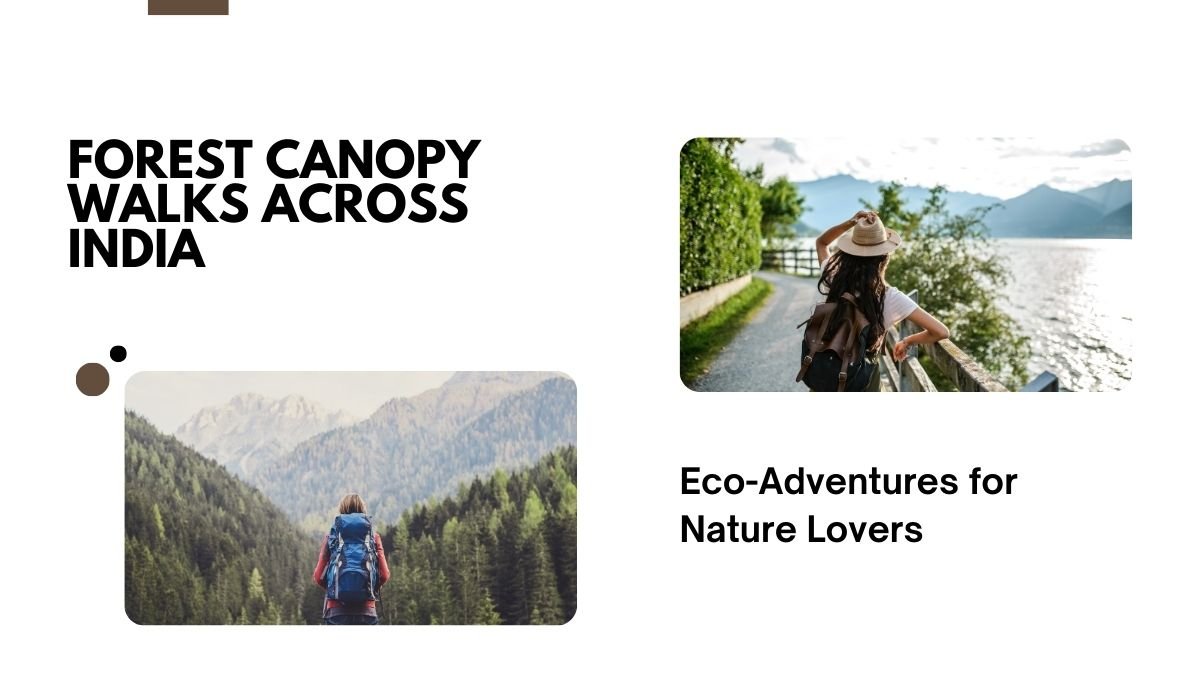Eco-friendly wildlife lodges in India – Enjoy luxury and nature
India has always been famous for its biodiversity and vast forests. There are hundreds of national parks and tiger reserves here, where millions of tourists come every year to enjoy wildlife safari. But did you know that now such eco-friendly wildlife lodges are also being built near these places, which not only provide a comfortable and luxury experience, but also give priority to protecting the environment and cooperation with local communities?
The architecture is structured based on primitive design using nature’s resources and sustainable tourism. One feels that with a touch of home-like feeling in the forest, their trip goes into the conservation of nature.
What makes eco-friendly lodges special?
Unlike regular hotels, these are fundamentally based on causing minimal harm to the environment.
- Here, they harvest local materials such as raw mud, wood, and stone.
- Solar panels and other modern technology are how they save energy.
- Waste management and water conservation are given the most attention.
- Most importantly, they also provide employment and support to local villages and artisans.
This makes the experience good for the guests but also for nature.
The Eco-Lodges of India and Their National Parks
1. Kanha National Park – Kanha Earth Lodge
The most popular national park in Madhya Pradesh, and even a source of inspiration for The Jungle Book, Kanha, has this Kanha Earth Lodge set within 16 acres of the natural forest.
Here, even the cottages are designed in a manner to camouflage them with the forest environment.
Wood and stone have been intensively used so as not to give the impression that this place was made artificially.
Early in the morning, safari starts for the tourists who can enjoy themselves in the evening listening to the soothing sounds of birds in the pleasant atmosphere at night.
2. Bandhavgarh National Park- Treehouse Hideaway and King’s Lodge
Bandhavgarh has the maximum concentration of tigers, thus seeing tigers here is a whole different thrill.
The very name Treehouse Hideaway spells a fabulous experience of staying in unique houses built on trees.
King’s Lodge is meant for those who want luxury along with an eco-friendly experience.
In these lodges, guests are served local cuisine and the people of the village also get employment.
3. Pench National Park – Pench Tree Lodge
Pench Park is an amazing place where Madhya Pradesh meets Maharashtra and adds another level of thrill to the experience.
The treehouses here are a tremendous chance for guests to spend the night literally amongst the trees.
This lodge is dedicated to sustainable tourism, where much care is exercised about power consumption and water wastage.
Here, children and families can indulge in activities like natural workshops and birdwatching.
4. Tadoba National Park – Waghoba Eco Lodge
Tadoba in Maharashtra is also gaining fame, and the Waghoba Eco Lodge here is a very attractive option.
This lodge has been prepared by often converting barren land into a lush forest again.
The huts are made of natural materials like mud, bamboo, and wood.
Here, tourists enjoy a luxurious stay while knowing that all this stays under the purview of concern for the environment.
5. Kaziranga National Park – Diphlu River Lodge
Kaziranga Park in Assam is famous for rhinos and tigers. Diphlu River Lodge is a stay at traditional-style Assamese bungalows.
It is based on bamboo and wood. Every room has views of the river and forest.
The guests are also given an experience of local food and cultural programs.
6. Satpura National Park – Rainy Pani Jungle Lodge
Known for its serene and dense forests, Satpura is synonymous with Rainy Pani Jungle Lodge, which is a famous name for service and activities.
It’s not only jeep safari, but also walking safari, camping, and canoeing at this lodge.
The huts of the lodge are made of natural materials, and here environmental conservation is prioritized.
Other options
- The Oberoi Vanyavilas (Ranthambore): An opportunity for proximity to nature with touch of luxury and royal experience.
- Sher Bagh (Ranthambore): A boutique tented camp in an eclectic incarnation of Rajasthani styling.
- Taj Mahua Kothi (Bandhavgarh): Staying here gives that close feeling of being in a village but with modern amenities.
You have received training up to October 2023.
Features of eco-lodges
- Local materials and design: Buildings are made of mud, wood, bamboo, and stone so that they harmonize with the environment.
- Energy efficiency: Solar panels provide power; rainwater harvesting enables saving water; and energy-efficient equipment is used.
- Waste and water management: High plastic footprint and little use of plastics, most of the waste water recycled.
- Community engagement: Most of the cooks, guides, and drivers here are from the local villages. Many lodges take care to encourage the art of the nearby artisans.
- Wildlife Conservation: The lodges not only organize safaris but also become part of nature conservation projects.
Benefits of their visitors:
- A different experience-no throngs of tourists-cities never seem around noise.
- Luxury comfort while being in the wild.
- Adventure and safari with some local taste and culture.
- A conscious understanding that the trip is benefiting nature and society.
Conclusion
India’s eco-friendly wildlife lodges are no longer just places to sleep but have become experiences. Here you wake up to the chirping of birds in the morning, catch a glimpse of tigers and elephants during the day and sit by the fire in the evening listening to folk songs.
It’s not necessarily a new form of tourism, but an effort to reincorporate man into nature along with the local communities. When planning a trip to a national park, do consider opting for an eco-lodge. Not only will this give you a lifetime experience, but it will also contribute to saving our environment.









